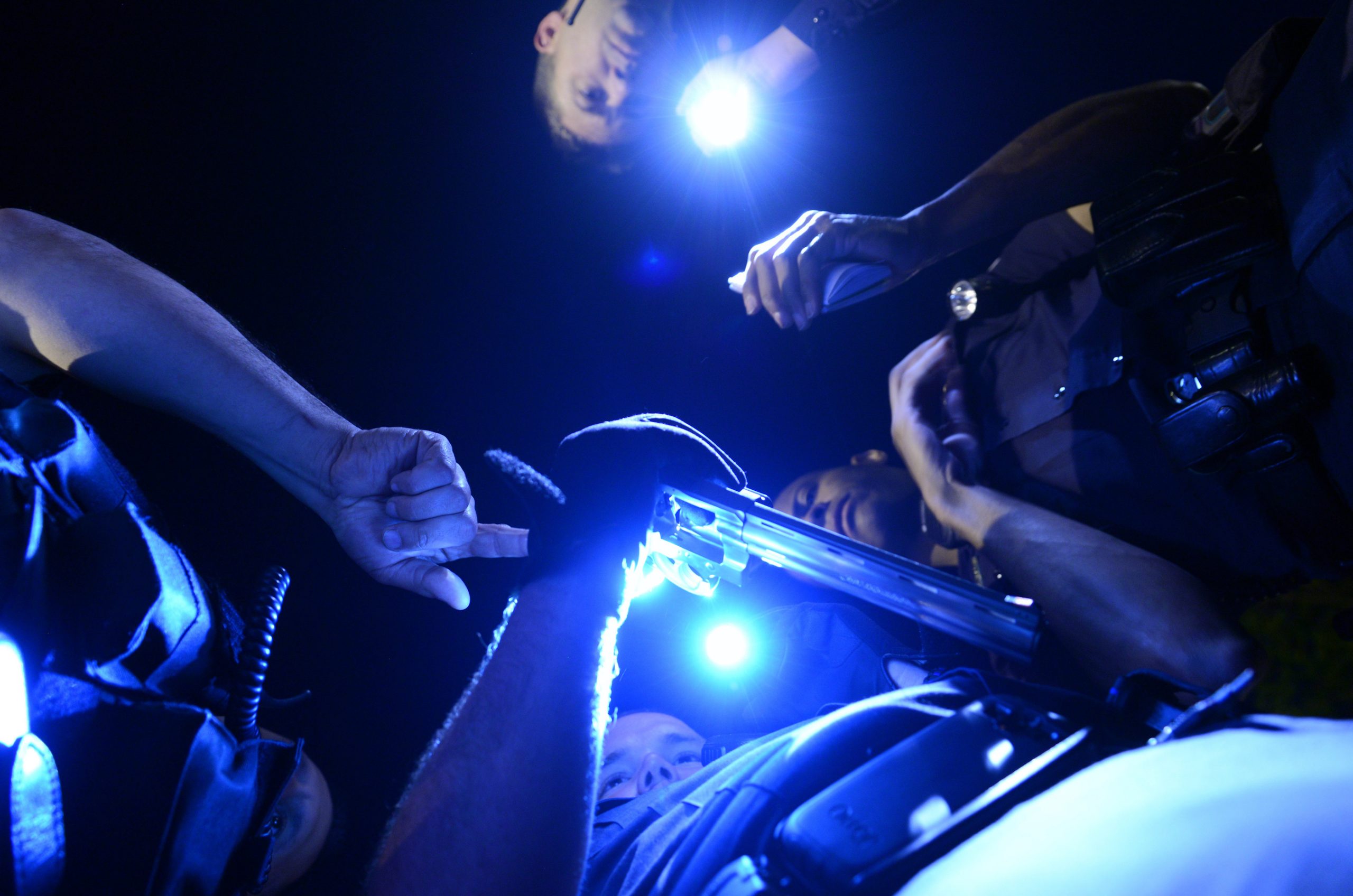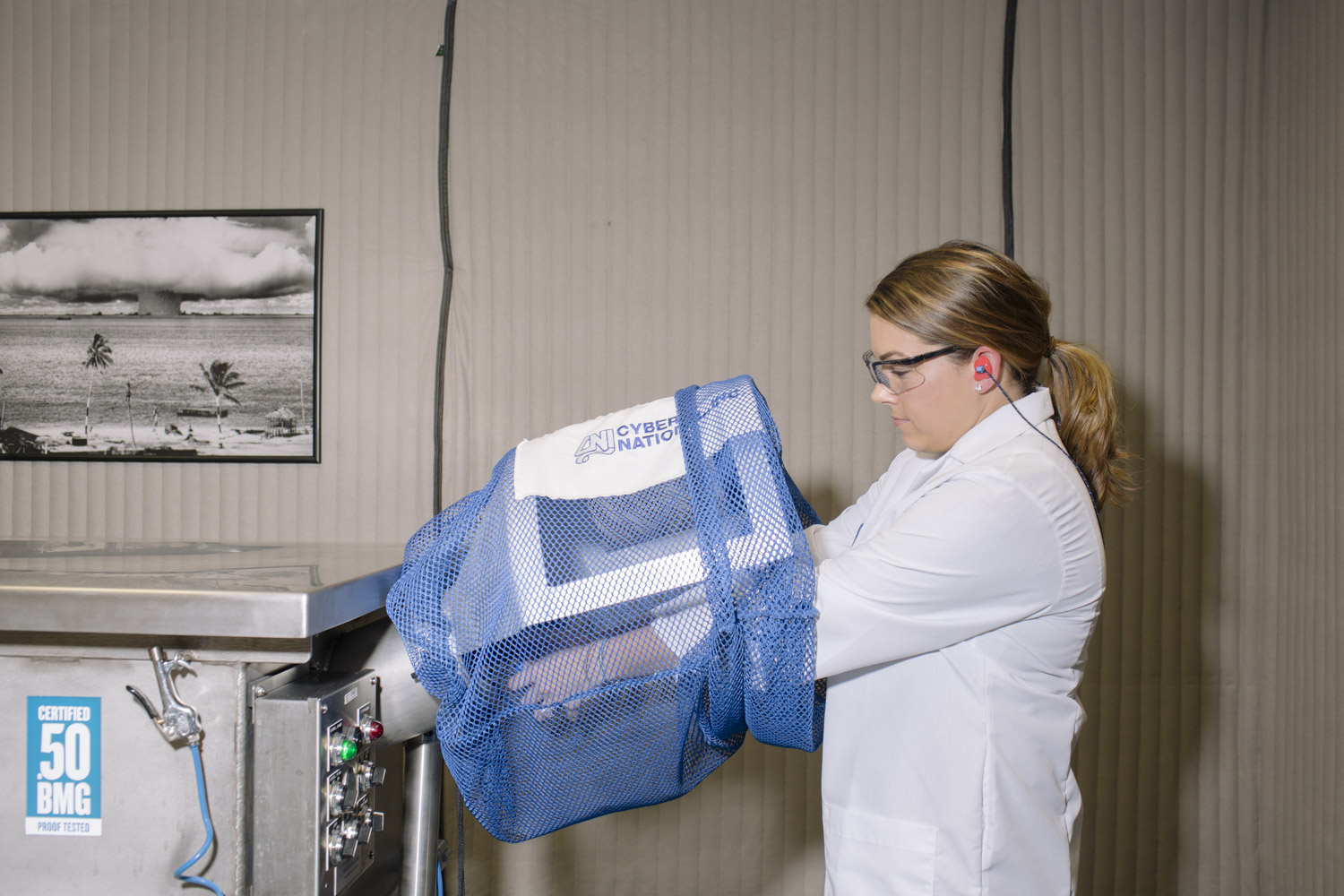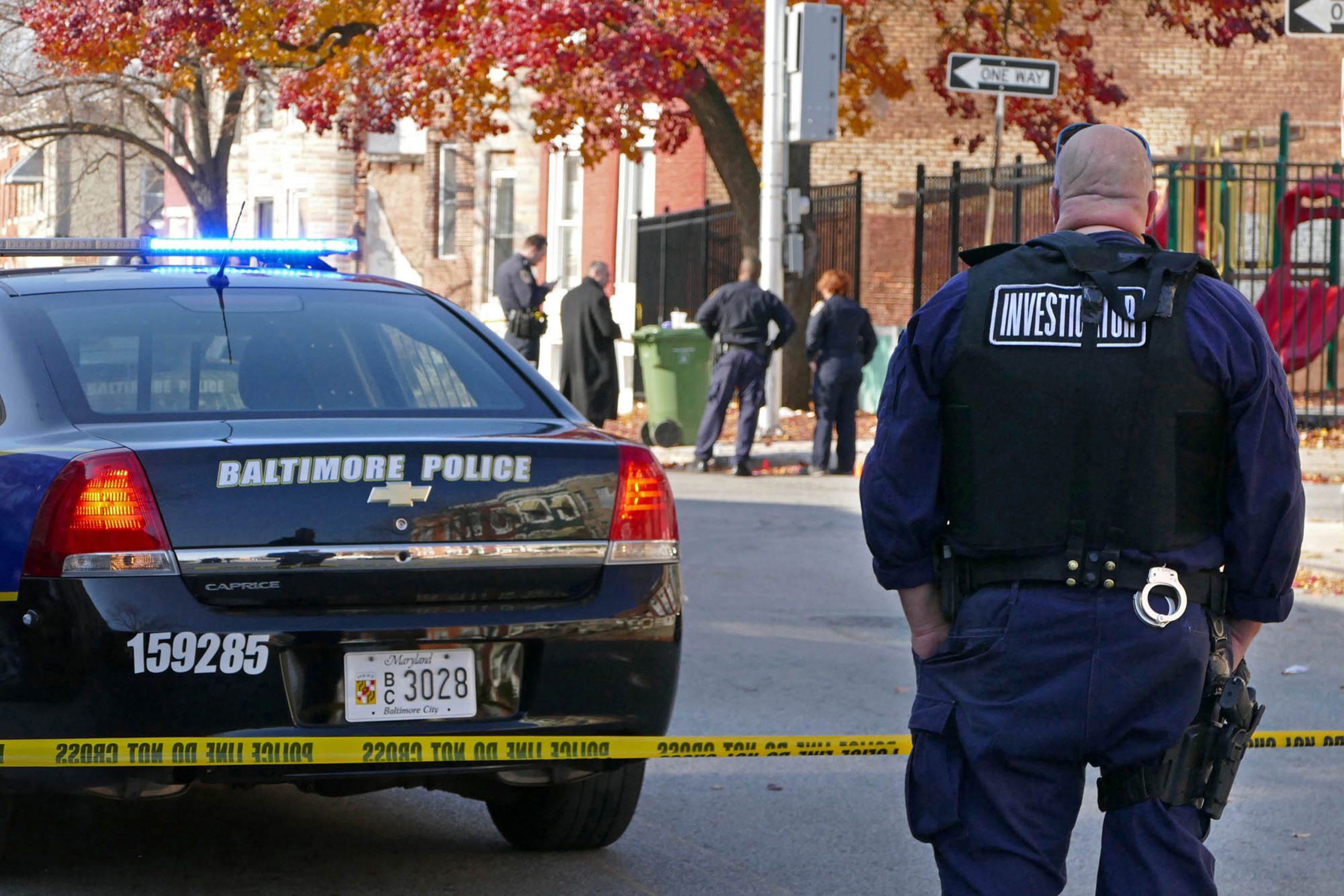The night before Valentine’s Day 2010, Derrick Shannon called 911 to say he’d accidentally shot his girlfriend in the head.
Shannon wasn’t supposed to have a gun. He had pleaded guilty to a slew of crimes over the years, including criminal domestic violence, burglary, and aggravated assault. Federal law barred him from possessing a firearm.
When police arrived, Shannon, then 29, told them he’d found the Smith & Wesson revolver a couple of weeks earlier in the woods behind his Rembert, South Carolina, home. He knew he shouldn’t have it, he said, but he held onto it for protection. He claimed that he’d been “messing” with the gun in the bathroom as his girlfriend, Beverly Thomas, cleaned the shower when it suddenly went off.
There was an easy way for police to find out where the gun originated — filling out a simple online form called a trace request provided by the Bureau of Alcohol, Tobacco, Firearms and Explosives. But the case file on Shannon doesn’t include any evidence of a trace. Asked about it, the Sumter County Sheriff’s Office said they’re not sure why. Gun tracing, said Captain Robert Burnish, is “a tool we use on a case-by-case basis.”
Policing experts and federal officials agree that law enforcement officers should trace every single crime gun that they recover. It’s a key way to solve gun crimes, investigate trafficking, and learn what the ATF’s gun-store inspectors and police could do to keep guns out of criminals’ hands.
But even though traces cost police departments nothing and the request form takes less than five minutes to fill out, our investigation showed that many agencies in South Carolina are not initiating traces, or are pursuing them only occasionally.
Starting with a database developed by The Post and Courier of Charleston, The Trace investigated 35 homicides in South Carolina from 2005 to the present. All the killers had prior domestic violence charges. At first, our goal was to learn how they had obtained their guns. Instead, we found that in 21 of the cases, there was no evidence the police had requested a trace.
South Carolina police are not alone in their spotty tracing habits. A survey of police departments across the country revealed that while some trace every gun, plenty trace only erratically — or not at all.
“How do we prevent crimes if we don’t know how they happen?” said Jim Bueermann, the president of the Police Foundation, a nonprofit police research and training organization, when presented with our findings. “It’s fundamental to the investigative process.”
When a gun is traced, the ATF uses basic information from the recovered weapon, like its serial number and manufacturer, to track down when it was first sold by a licensed dealer, and to whom. A trace report can help police solve a specific crime, like when one shows a murder suspect buying a firearm just days before a homicide. It can help police investigate holes in the system, for instance the one that allowed Shannon to get a gun he ended up using to kill someone. And collectively, trace reports can help police identify trafficking patterns, and what kind of laws might keep firearms out of criminals’ hands. For example, Chicago police traced four different crime guns they recovered this summer back to the same Idaho pawn shop. By investigating the original sales, they were able to arrest a straw purchaser.
What’s more, experts say if gun tracing is uneven, it skews the good data that law enforcement gets. It’s hard for law enforcement to tell if a gun dealer is actually selling a high number of crime guns, or if that dealer’s guns are simple ending up with police departments that are tracing more comprehensively.
“Every law enforcement agency should be tracing all the guns they recover,” said Thomas Ahern, a former senior special agent for ATF who now works as a spokesman for Chicago Police Department. Chicago police trace every crime gun they recover, Ahern said.

In South Carolina’s bigger cities, Charleston and Columbia, police said the same, as did their colleagues in North Charleston and Dorchester and Charleston counties. But officials in several smaller South Carolina jurisdictions said that once officers know who pulled the trigger, they have fulfilled their obligation — there’s no need for them to find out where the gun came from. Even if the offender was prohibited from possessing a gun, there are enough ways for criminals to get around the system — by inheriting the gun, or buying it from a private seller — that it seems unlikely that a trace report will yield useful information, they said.
Brian King, a spokesperson for the 8th Judicial Circuit Solicitor’s Office, which prosecutes cases in four counties in the northwestern part of the state, said that the files police send to his office rarely contain trace reports. “There’s no value for us in determining where or when a gun was purchased,” he said. “ATF would love it if all these other people would do all this other work. It doesn’t add any value to a case we’re making.”
Other law enforcement experts dispute that trace reports are a significant burden on police departments. They do require that police get in the habit of writing down key information on the gun, like the manufacturer’s name and the country where it was made. But traces are free to local police and quick to request. Urgent traces are returned within 24 hours. Routine traces usually take about nine days.
In Pickens County, a rural community of about 120,000 residents in the northwest part of South Carolina, Chief Deputy Creed Hashe was surprised to learn that the ATF wants departments to trace every gun recovered. If it helps with broader investigations, he said, his department would be willing to make the effort. But he added that guns are popular in his area and the number of guns his department collects can be overwhelming. “With as many firearms as we come in contact with, I feel like it would literally shut the system down if we traced every one,” he said.
When a Pickens County man named William Thomas shot his wife, his 15-year-old stepson, and then himself in 2012, Hashe said his department did not trace the gun. The shooter was dead and could not be prosecuted, so “it didn’t matter where he got the gun,” Hashe said.
But Bueermann said that even if the suspect is dead, or police think they know where an offender got the gun, a trace can unearth important information. “How do you know that someone didn’t transfer the gun to him knowing what he was going to use it for, or that someone didn’t buy the gun and encourage him to do it?” Bueermann said. When there’s a plane crash or a medical mistake, investigators get to the bottom of how it happened, Bueermann said. Why don’t police do the same thing when someone is shot or killed?
Gun researchers and the ATF said no one keeps data on what percentage of recovered crime guns are traced nationwide. And police departments across the country report a huge variation in how comprehensively they trace recovered crime guns. Police in some smaller cities we called — like Odessa, Texas, and Decatur, Alabama — said they routinely trace every gun they recover. Law enforcement in Eau Claire, Wisconsin, and Pocatello, Idaho, by contrast, said they trace on a case-by-case basis.
New Jersey is the only state where police are required to trace every gun. Since an attorney general’s directive that requires gun traces took effect in 2008, the state has used tracing data to better understand where its crime guns come from and how to keep them out, said Jeremy Feigenbaum, a counsel to the Attorney General’s office.
Trace reports show that about 80 percent of New Jersey guns come from outside the state. Last year, Feigenbaum said, law enforcement used gun traces to uncover a trafficking ring that was bringing illegal guns from Ohio to criminals in New Jersey. He said tracing information, which New Jersey law enforcement agencies are now required to share with each other, also helps lawmakers know what legislation might have the most impact. “It helps us understand what the exact problem is so we can make laws,” Feigenbaum said.

Even mistakes can be valuable when you learn from them, said Rick Myers, executive director at the Major Cities Chiefs Association, which represents the largest law enforcement agencies in the United States and Canada. For example, after a man slipped through the gun background check system and was able to buy the AR-15 style rifle that killed 26 people at a Sutherland Springs, Texas, church last year, federal agencies improved the way they were entering military conviction information into the FBI’s background check database, Myers said. “As unfortunate as that case was, it really was a call to arms to take a good hard look at the system and tighten it up,” he said.
As part of our investigation, The Trace found one Greenville County case from 2010 in which the trace report showed a murderer got around the checks that are supposed to prevent violent people from having guns. In that case, the ATF’s inquiries found that Dennis Gibbs bought a gun from a licensed dealer despite a conviction for criminal domestic violence. Seven days later, he used it to kill his girlfriend, Jessica Anderson, and shoot her 14-year-old daughter.
Steve Morris oversaw the FBI’s gun background check system until 2016. He said that when a person who should be stopped by a background check somehow passes one, it’s important to look back and see where the system failed.
There was a time, during the 1980s, when gun tracing was in vogue. Through its Youth Crime Gun Interdiction Initiative, the ATF got 27 cities across the country to commit to tracing every gun they recovered. In return, the agency agreed to crunch the data and send back valuable information about possible straw sales, trafficking patterns, and problematic dealers.
“We were striving to make tracing a routine thing, just like everyone you arrest, you fingerprint,” said Bradley Buckles, who was director of the ATF at the time.
Buckles said the effort helped police solve specific cases, and gave the ATF crucial information about where to direct their enforcement efforts. He recalled that the data helped track down a band of gun traffickers in Norfolk, Virginia, who were selling guns illegally to buyers in New York.
But Buckles believes the trace data was sometimes used unfairly. Lawmakers and the media cited the numbers to publicly raise questions about dealers who had sold the most crime guns. Buckles said some dealers who were featured hadn’t done anything illegal — they sold a lot of guns, and it followed that some of them eventually made it into criminal hands.
Glenn Pierce, director of the Institute for Security and Public Policy at Northeastern University, told us that by singling out dealers, legislators riled defenders of the Second Amendment.
Contact Us
Learn how to contact our reporters securely.
“It provoked a tremendous backlash,” Pierce said. “They were going beyond the data and picking on a group that was more powerful than tobacco companies.”
Under President George W. Bush, the Youth Crime Gun Interdiction Initiative lost its funding. Then in 2003, Congress passed the Tiahrt Amendment, which prohibits the ATF from releasing information from its trace database to anyone other than a law enforcement agent or prosecutor.
In recent years, gun tracing has sometimes been characterized as inefficient. Because very few states and cities require owners to register their weapons, there’s no official record of what happens after a licensed dealer first sells a gun. Police investigating a crime must painstakingly establish the chain of possession starting with that first legal owner.
What’s more, under a 1986 law, the ATF can’t build a searchable gun database. Because of that, records of the original gun sales are kept with the dealers or with the ATF, in paper files or on microfiche, and employees must scroll through reams of films to find the relevant record.
Beneath the reams of paper and archaic filing systems, however, law enforcement experts say the national tracing center holds data that could be used to significantly reduce the nation’s gun crime.
“You never know which case will or won’t be important,” said Tom O’Reilly, director of the Police Institute at Rutgers University. “You may get a lot of dead ends, but once in a while you’re going to get that string to pull, and it really takes you somewhere.”


